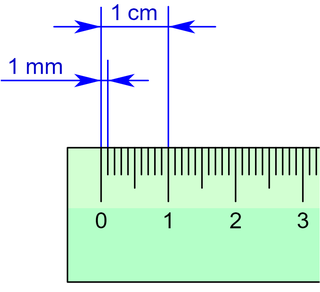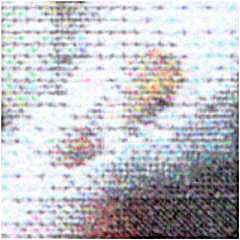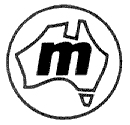
The inch is a unit of length in the British Imperial and the United States customary systems of measurement. It is equal to 1/36 yard or 1/12 of a foot. Derived from the Roman uncia ("twelfth"), the word inch is also sometimes used to translate similar units in other measurement systems, usually understood as deriving from the width of the human thumb.

The micrometre or micrometer, also commonly known by the non-SI term micron, is a unit of length in the International System of Units (SI) equalling 1×10−6 metre ; that is, one millionth of a metre.

In digital imaging, a pixel, pel, or picture element is the smallest addressable element in a raster image, or the smallest addressable element in a dot matrix display device. In most digital display devices, pixels are the smallest element that can be manipulated through software.

United States customary units form a system of measurement units commonly used in the United States and most U.S. territories, since being standardized and adopted in 1832. The United States customary system developed from English units that were in use in the British Empire before the U.S. became an independent country. The United Kingdom's system of measures was overhauled in 1824 to create the imperial system, which was officially adopted in 1826, changing the definitions of some of its units. Consequently, while many U.S. units are essentially similar to their imperial counterparts, there are noticeable differences between the systems.

Typographic units are the units of measurement used in typography or typesetting. Traditional typometry units are different from familiar metric units because they were established in the early days of printing. Though most printing is digital now, the old terms and units have persisted.

The millimetre or millimeter is a unit of length in the International System of Units (SI), equal to one thousandth of a metre, which is the SI base unit of length. Therefore, there are one thousand millimetres in a metre. There are ten millimetres in a centimetre.

Dots per inch is a measure of spatial printing, video or image scanner dot density, in particular the number of individual dots that can be placed in a line within the span of 1 inch (2.54 cm). Similarly, dots per centimetre refers to the number of individual dots that can be placed within a line of 1 centimetre (0.394 in).

Dot pitch is a specification for a computer display, computer printer, image scanner, or other pixel-based devices that describe the distance, for example, between dots (sub-pixels) on a display screen. In the case of an RGB color display, the derived unit of pixel pitch is a measure of the size of a triad plus the distance between triads.
A twip is a typographical measurement, defined as 1⁄20 of a typographical point. One twip is 1⁄1440 inch, or 17.64 μm.

Metrication is the process of introducing the International System of Units, also known as SI units or the metric system, to replace a jurisdiction's traditional measuring units. U.S. customary units have been defined in terms of metric units since the 19th century, and the SI has been the "preferred system of weights and measures for United States trade and commerce" since 1975 according to United States law. However, conversion was not mandatory and many industries chose not to convert, and U.S. customary units remain in common use in many industries as well as in governmental use. There is government policy and metric (SI) program to implement and assist with metrication, however there is major social resistance for further metrication.
Pixels per inch (ppi) and pixels per centimetre are measurements of the pixel density of an electronic image device, such as a computer monitor or television display, or image digitizing device such as a camera or image scanner. Horizontal and vertical density are usually the same, as most devices have square pixels, but differ on devices that have non-square pixels. Pixel density is not the same as resolution — where the former describes the amount of detail on a physical surface or device, the latter describes the amount of pixel information regardless of its scale. Considered in another way, a pixel has no inherent size or unit, but when it is printed, displayed, or scanned, then the pixel has both a physical size (dimension) and a pixel density (ppi).
Lines per inch (LPI) is a measurement of printing resolution. A line consists of halftones that is built up by physical ink dots made by the printer device to create different tones. Specifically LPI is a measure of how close together the lines in a halftone grid are. The quality of printer device or screen determines how high the LPI will be. High LPI indicates greater detail and sharpness.
An em is a unit in the field of typography, equal to the currently specified point size. For example, one em in a 16-point typeface is 16 points. Therefore, this unit is the same for all typefaces at a given point size.

The pica is a typographic unit of measure corresponding to approximately 1⁄6 of an inch, or from 1⁄68 to 1⁄73 of a foot. One pica is further divided into 12 points.

In typography, the point is the smallest unit of measure. It is used for measuring font size, leading, and other items on a printed page. The size of the point has varied throughout printing's history. Since the 18th century, the size of a point has been between 0.18 and 0.4 millimeters. Following the advent of desktop publishing in the 1980s and 1990s, digital printing has largely supplanted the letterpress printing and has established the desktop publishing (DTP) point as the de facto standard. The DTP point is defined as 1⁄72 of an inch and, as with earlier American point sizes, is considered to be 1⁄12 of a pica.
Image resolution is the level of detail of an image. The term applies to digital images, film images, and other types of images. "Higher resolution" means more image detail. Image resolution can be measured in various ways. Resolution quantifies how close lines can be to each other and still be visibly resolved. Resolution units can be tied to physical sizes, to the overall size of a picture, or to angular subtense. Instead of single lines, line pairs are often used, composed of a dark line and an adjacent light line; for example, a resolution of 10 lines per millimeter means 5 dark lines alternating with 5 light lines, or 5 line pairs per millimeter. Photographic lens are most often quoted in line pairs per millimeter.
A cicero is a unit of measure used in typography in Italy, France and other continental European countries, first used by Pannartz and Sweynheim in 1468 for the edition of Cicero's Epistulae ad Familiares. The font size thus acquired the name cicero.

Metrication in Australia effectively began in 1966 with the conversion to decimal currency under the auspices of the Decimal Currency Board. The conversion of measurements—metrication—commenced subsequently in 1971, under the direction of the Metric Conversion Board and actively proceeded until the Board was disbanded in 1981.
Sweden decided to adopt the metric system in 1876. After a ten-year transition period starting 1879, the use of legacy units was outlawed by the beginning of 1889.

A typometer is a ruler which is usually divided in typographic points or ciceros on one of its sides and in centimeters or millimeters on the other, which was traditionally used in the graphic arts to inspect the measures of typographic materials. The most developed typometers could also measure the type size of a particular typeface, the leading of a text, the width of paragraph rules and other features of a printed text. This way, designers could study and reproduce the layout of a document.











